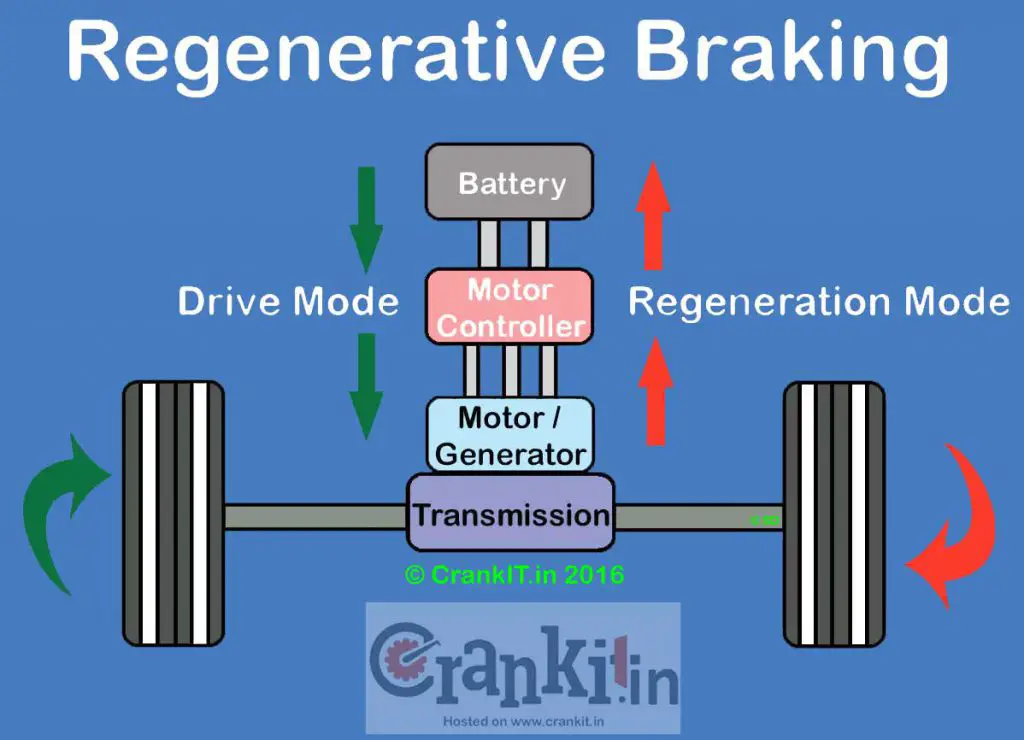Construction and working:
The regenerative braking system is an advanced and supplementary braking system. It is used alongwith the conventional braking system in modern electric/hybrid vehicles. Most of the latest vehicles from manufacturers, such as; Tesla, Toyota, Volkswagen, and Mercedes use regenerative braking technology.
Why use regenerative braking?
The conventional braking causes friction between brake pads and brake disc. It converts the vehicle’s kinetic energy into heat which goes waste. However, the regenerative system recovers some of the waste energy and puts it to work again. The system captures and converts this waste energy into electricity. The electricity, thus regenerated, charges the battery of an electric or hybrid vehicle.
How this braking system works?
In the regenerative braking system, the motor, which drives an electric vehicle, also performs the function of braking. The system consists of an electric motor with dual function. It works as a motor in one direction and also as a generator in the opposite direction. When it runs as a motor, it converts electrical energy into mechanical energy and drives the wheels. However, while braking, it runs in the opposite direction and becomes an electric generator. Applying the brakes of an electric or hybrid vehicle causes the electric motor to run in reverse direction i.e. in generator mode. Thereby, it slows down the wheels.

During this time, the wheels transfer the kinetic energy or momentum back to the generator. While rotating, the generator converts this kinetic energy into electrical energy. Later, it transfers the electricity generated back to the batteries and charges them.
The regenerative braking uses complex electronic circuits to choose between the forward/reverse direction of rotation of the motor. In some cases, manufacturers use capacitors to store the electrical energy for later use. Keeping the battery fully charged, especially in electric vehicles, is very helpful. It extends their driving range. It also helps to improve the mileage and reduce emissions to some extent in case of hybrid vehicles.
Limitations of Regenerative Braking:
However, the regenerative system has some limitations. It performs effectively only up to certain speeds especially in the ‘stop-and-go’ driving condition. The braking is usually slower as compared to the conventional brakes. Also, it is not very efficient at lower speeds. Hence, the braking duties are not entrusted upon the regenerative braking alone. It only assists the regular brakes in the more effective way. In case if the motor fails to slow down the vehicle quickly, the electronic control module applies the conventional friction brakes and stops the vehicle.
Watch how regenerative brakes work, here:
Read More: What is Cornering Brake Control in cars?>>
